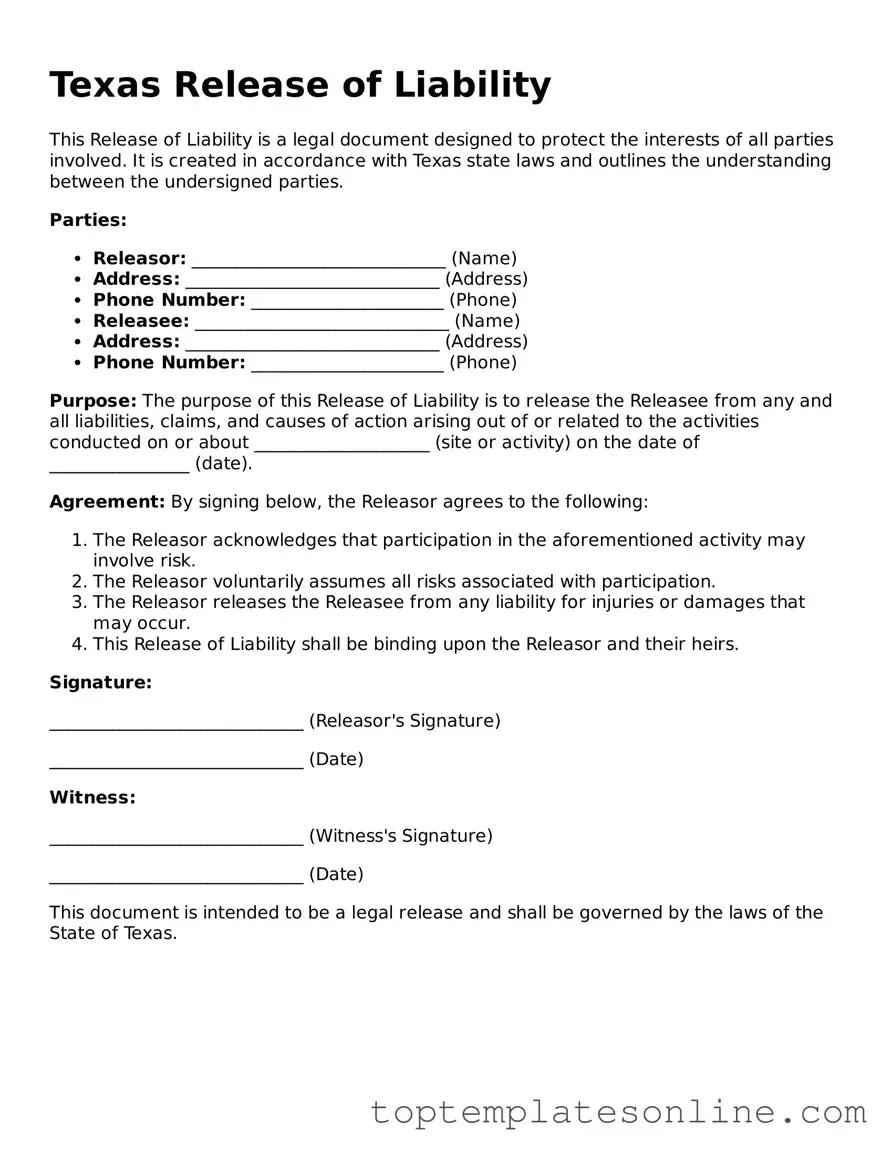Blank Release of Liability Template for Texas State
The Texas Release of Liability form is a legal document designed to protect individuals and organizations from claims resulting from injuries or damages that may occur during specific activities. By signing this form, participants acknowledge the risks involved and agree to waive their right to sue for any potential injuries. Understanding this form is crucial for both providers and participants to ensure clarity and safety in various recreational and professional settings.
Customize Release of Liability Here
